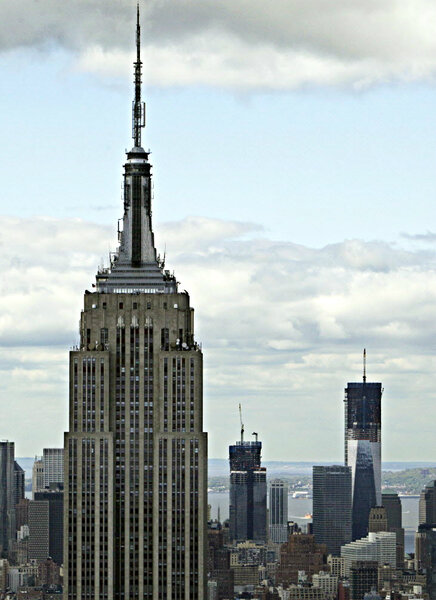The Empire State Building in New York City, now the country’s fourth-tallest structure, stands at 1,250 feet high. As the world’s tallest skyscraper for 42 years after its completion in 1931, the American icon’s moniker was derived from New York’s nickname, the Empire State. It was the World Trade Center’s North Tower, completed in 1972, that eclipsed the Empire State Building’s title as New York’s tallest building. However, following the Sept. 11 attacks, the Empire State Building was again the tallest building in New York, though, not in the world.
The building, with 102 stories, was the first to have more than 100. It has 6,500 windows, 73 elevators, 1,860 steps and a total floor area of nearly 2.8 million square feet. The building even has its own zip code, 10118, and houses 1,000 businesses, making it the second-largest single office complex in America, following the Pentagon.
Referred to in film, television, and literature, the Empire State Building has been a popular-culture mainstay for years, perhaps most famously depicted in the 1933 film, "King Kong," in which the giant ape climbs to the top to escape his captors. This scene was partially recreated in 1983 for the film’s 50th anniversary, in which a 90-foot inflatable King Kong was placed above one of the building’s observation deck.
Since 1978, runners and climbers have been participating in the Empire State Building Run-Up, a foot race from ground level to the 86th-floor observation deck. The race covers a vertical distance of 1,050 feet and the record time is 9 minutes and 33 seconds, achieved by Australian professional cyclist Paul Crake in 2003.







